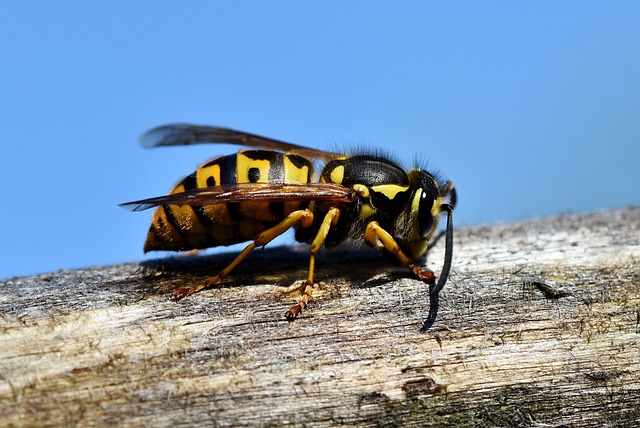- gopestcontrolmel@gmail.com
- 0449901208

Are you tired of sharing your living space with buzzing, stinging intruders? If you're in Australia and facing a hornet infestation, fear not! In this guide, we'll uncover the secrets behind safely and effectively removing these menacing pests from your surroundings. Hornets, known for their aggressive behavior and painful stings, can be a source of great distress and danger, especially for those with allergies. But fret not, as we delve into expert tips and techniques that will help you reclaim your home and keep these unwelcome visitors at bay. From identifying the different hornet species you may encounter to exploring eco-friendly and humane removal methods, we've got you covered. Say goodbye to sleepless nights and constant anxiety caused by hornets invading your space. It's time to take control and restore peace to your home with our comprehensive guide on safely and effectively removing hornets in Australia.
Hornets are not your average backyard insects. They are known for their aggressive behavior and painful stings, making them a source of great distress and danger, especially for those with allergies. Understanding the dangers associated with hornets is crucial in order to effectively deal with them.
Hornets belong to the family Vespidae and are closely related to wasps and yellow jackets. In Australia, some of the common hornet species you may encounter include the European hornet (Vespa crabro) and the Asian hornet (Vespa velutina). These hornets are larger than regular wasps, with queens measuring up to 35mm in length. The workers, on the other hand, can reach sizes of 25mm.
One of the main dangers of hornets is their aggressive nature. When their nest is disturbed or they feel threatened, hornets will not hesitate to attack. They can sting multiple times, injecting venom that causes intense pain and can lead to severe allergic reactions in some individuals. It is important to exercise caution when dealing with hornets to avoid getting stung.
In addition to the physical dangers, hornets can also cause psychological distress. The constant presence of buzzing, stinging intruders can lead to sleepless nights, anxiety, and a general feeling of unease. To restore peace to your home, it is essential to take proactive steps in safely and effectively removing hornets from your surroundings.
Before you can effectively remove hornets from your property, it is important to identify their nests. Hornets typically build their nests in protected places, such as tree hollows, wall cavities, and roof spaces. It is not uncommon to find hornet nests in sheds, garages, and even inside homes.
Hornet nests are made from a papery material that the insects create by chewing wood fibers and mixing them with their saliva. The nests can vary in size, with larger nests housing hundreds of hornets. The outer layer of the nest is usually grayish-brown in color and has a papery texture.
To locate a hornet nest, observe the flight patterns of the hornets. Hornets have specific flight paths between their nest and food sources, so by following their flight path, you can trace it back to the nest. It is important to exercise caution and maintain a safe distance when observing hornets to avoid getting stung.
Once you have identified the location of the nest, it is crucial to plan your removal strategy carefully. Safety precautions must be taken to minimize the risk of getting stung or causing unnecessary harm to the hornets. Let's explore some important safety measures to keep in mind when dealing with hornets.
Dealing with hornets can be dangerous, so it is essential to take proper safety precautions to protect yourself and others. Here are some important safety measures to keep in mind when removing hornets:
By following these safety precautions, you can minimize the risk of getting stung and ensure a safer removal process. However, if you prefer a more natural approach to hornet removal, there are several methods that you can try.
If you prefer to avoid using harsh chemicals or insecticides, there are several natural methods you can try to remove hornets. These methods are generally considered more eco-friendly and can be effective in smaller infestations. Here are some natural methods for hornet removal:
It is important to note that while these natural methods can be effective, they may not be suitable for large infestations or aggressive hornets. In such cases, it may be necessary to resort to using insecticides. Let's explore how insecticides can be used to remove hornets effectively.
Insecticides can be an effective way to remove hornets, especially in larger infestations or when dealing with aggressive hornets. However, it is important to use insecticides responsibly and according to the manufacturer's instructions. Here are some steps to follow when using insecticides for hornet removal:
Here are some benefits of hiring professional pest control services:
15+ Years of Experience in Rat Control
24/7 Available
Affordable Prices
Environment-Friendly Pest Control
Same Day Service Available
Well, Trained Professionals
Fully Licensed
Affordable Prices
Efficient and top-notch quality rat control services in Australia
Over 15 Years of industry experience in rodent treatment
We are the best rodent treatment, inspection, protection, and control services in Australia
Well-trained and fully accredited rodent control professionals
Eco-friendly rat pest control